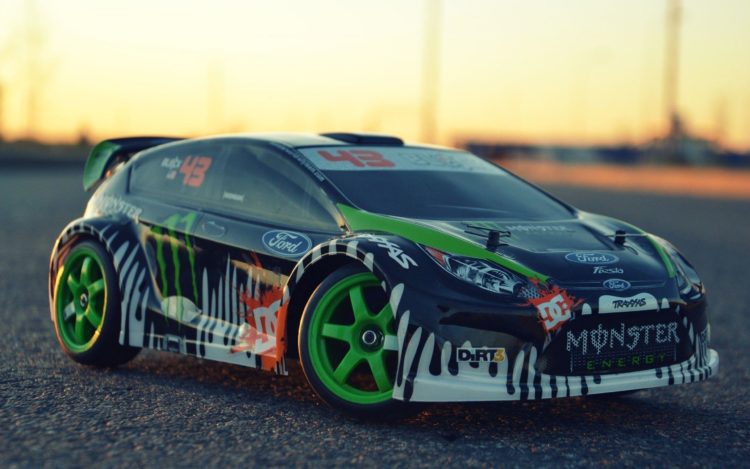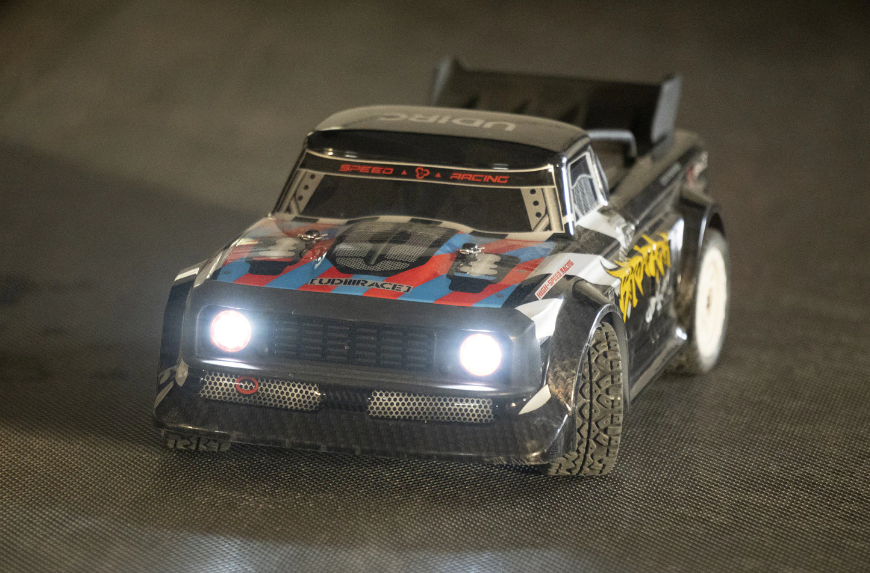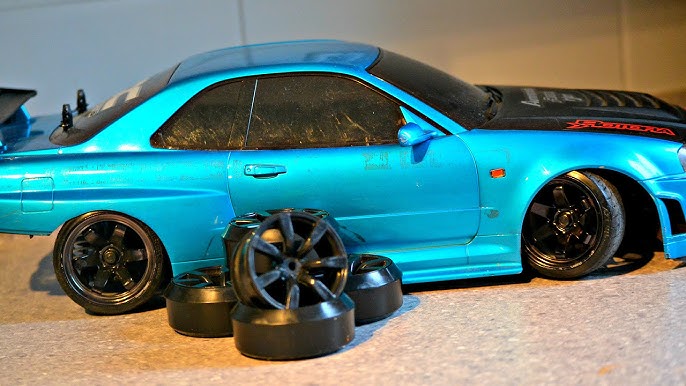With its mix of skill and attitude, it’s no surprise that drifting is now the fastest-growing niche on the RC car scene. And not only is it proving to be the perfect introduction to RC for beginners, but it’s also where growing numbers of long-time RC enthusiasts are turning to put their driving expertise to the test. If you’re in the latter group, then you’ve already discovered that driving sideways on the 1:10 scale takes a lot more control and patience than just shovelling hard through the curves. It takes practice. And as tempting as it may be to commit one of your on-road RC chassis to drift, you’ll quickly realize that you’re better off resisting the urge.
Not all chassis are created equal, nor are they intended to be. Sure, an on-road chassis can drift, but it won’t reach the speeds, cut the angles, or turn heads as a top-notch drift chassis will. It’s easily the most realistic of all the RC driving styles; and if you’re ready to experience the attention to detail, the passion, and even the physics of the prototypes, then a purpose-built drifter is right up your alley.
Contents
Hooked on Drifting

Let’s be honest: although the RC community has never suffered from a lack of enthusiasm, it’s never seen the explosion of growth like it has with drifting. An entire culture of car and even track design has evolved around RC drift cars, making them the most exciting, yet still most affordable of the RC disciplines to get started with. From brush-motored chassis/shell combinations with fixed suspensions that are ready-to-run (RTR) straight from the box, to brushless-motored, carbon fiber and aluminium chassis-only set-ups with fully adjustable suspensions, it doesn’t take long to understand why drifting has made the impression that it has.
If you’re looking for straight line acceleration, or the perfect lines to follow a hundred times around a road course – all attributes associated with good grip – you won’t find that with RC drifting. Drifting’s about knowing how to maintain control after you’ve intentionally sacrificed grip, with the added benefits of:
- Lower start-up costs than any other type of RC activity;
- Minimal space required to get maximal enjoyment; and,
- No worries about rampant parts breakage.
In short, piloting an RC drift car around a room-sized circuit isn’t too far a departure from understanding how to pilot a prototype around a full-sized parking lot. It’s not a skill that’s mastered in one or two sessions, but once you’ve learned the basics, you’re going to keep coming back for more.
Chassis Chic

When we talk about what makes a pure drift chassis so special, what we’re talking about are drive wheel arrangements. Drift car chassis can be built to match any number of driver preferences and styles, but there are only 2 types of pure drift chassis.
4-wheel Drive
4-wheel drive (4WD) platforms are the most common, and most predictable chassis used on drifters, and they typically split the drive motor’s power 50:50 between the front and rear wheels with the aid of a drive belt. This arrangement limits 4WDs to only 50° – 70° of available steering angle, so making them slide requires a counter-steer (CS) setup that allows the rear wheels to turn 50% – 80% quicker than the fronts. On an RTR setup, this CS adjustment equates to having either a 1.5 or 1.8 axle differential.
Rear-wheel Drive
Rear-wheel drive (RWD) platforms are at the purer end of RC drift cars for sale because of their similarity to the prototypes. Without drive gear attached to the front wheels, steering angles of 80° and higher are possible, allowing these chassis to perform nearly prototype-authentic drifting maneuvers. This level of authenticity makes them harder to control than 4WDs though, so these platforms also tend to feature a gyro (to aid in steering) as well as the ability to make minute wheel camber and weight transfer adjustments.
Suffice it to say, it doesn’t get much closer to tuning and driving a prototype drifter than this. It’s why RC drifting has grown to include competitive, fully-sponsored driving teams with their own fanbases: all of which begins with starting with the right chassis.
Wheels and Rims

Chances are, you might not immediately recognize a drift car if it has its shell on. A quick look at the wheel and rim combination, however, will tell you precisely what the car’s designed to do. Instead of extra-grippy drag or course-type rubber wheels, you can identify drift RC cars by their hard rubber, or plastic compound tyres that don’t require inserts and mount directly over the rims. Overwhelmingly, you’ll be looking out for tyres made from these materials.
- ABS. A hard tyre compound is known for good wear and sliding characteristics.
- Rubber. Good for sliding on paved surfaces when made from hard compounds, but wear out quickly.
- Resin. Good wearing tyres and good for use on all surfaces.
Drift wheels also come in a range of tread and sidewall profiles, and wheel preferences can vary according to the amount of camber dialled into the chassis, the offset of the rims, and the driving surface. It shows however the degree of tuning that’s available with drift cars, along with how easy it is to make a ride that’s perfect for you.
Getting into the Details
Beyond their chassis and wheels, there’s still one other component that’s ultimately set an RC drift car kit set up apart from all others: the shell. Drifter shells now possess almost scale model-like quality details that propel them into a league all their own.
From the bolt patterns on fender flares and roll cages, to working headlight and taillight assemblies, even the scene for RC drift cars in Australia is setting new standards for RC realism. One-of-a-kind paint jobs matching professional drifting-series prototypes are the norm; and not surprisingly, it’s the combination of this level of visual detail and performance that’s driving the passion for RC drifting so strongly worldwide.
The Final Word
At the end of the day, it’s easy to see how drifting has become such a dominant part of RC. By promoting and offering a fresh degree of innovation, skill, and camaraderie to the RC world – all at a price point that’s still lower than other niches – RC drifting, just like the prototype activity, is here to stay. With a chassis that is designed exclusively for RC drift cars, you’ll get to experience straight away just how much fun drifting is. You won’t even need to go outside to put it through all its paces. If you’re in the market for some new RC excitement, now’s the time to consider stepping up to drifting.










